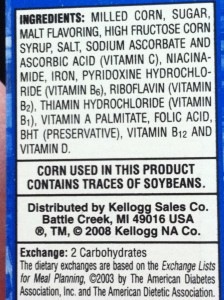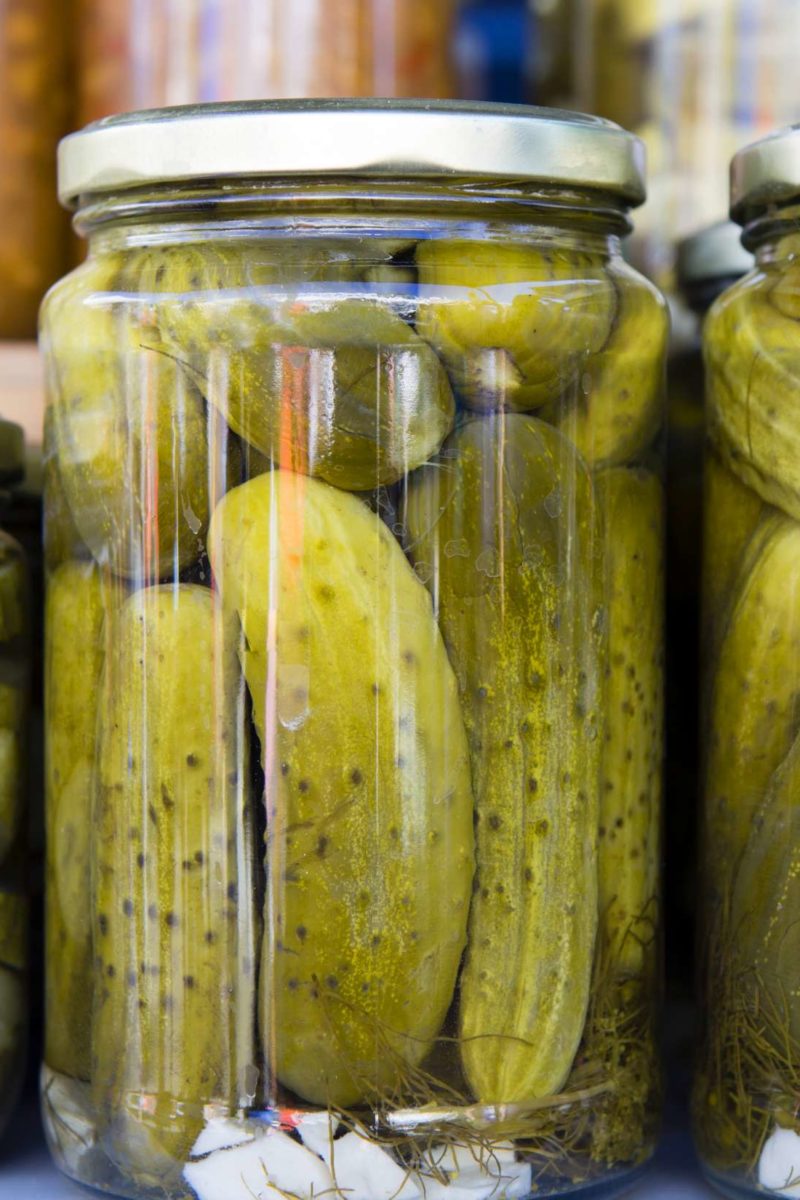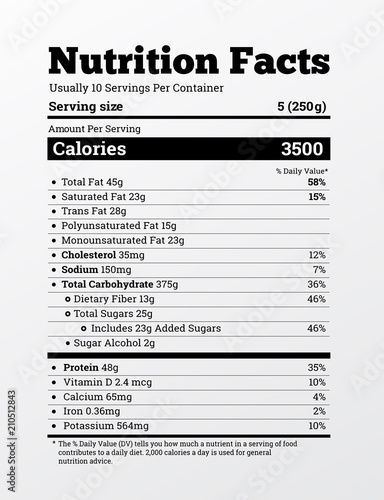39 vitamins on food labels
Vitamins for Private Label - NutriFusion Fruit & Veggie ... GrandFusion® vitamins help food, beverage, and supplement processors create the private label products of tomorrow that so many consumers are demanding. Go With GrandFusion® Vitamins GrandFusion® nutrient-dense fruit and veggie powders are able to withstand a wide variety of manufacturing processes, making it so much easier for processors to ... PDF Interactive Nutrition Facts Label - Vitamins and Minerals ... Interactive Nutrition Facts Label • March 2020 wwwaovnutritioneucation Vitamins and Minerals Chart 4 * The Daily Values are reference amounts of nutrients to consume or not to exceed each day.
Which Vitamins Must be included on the Food Label? Jun 12, 2021 · By law, you should mention Vitamin D and its quantity in a particular food product. Not all the other vitamin disclosures you find on the food labels are necessary. However, there is no harm if you voluntarily disclose the other vitamin forms and their quantifiable percentages present in a serving.

Vitamins on food labels
Vitamin, mineral daily requirements and good food sources ... RDAs, food sources for selected vitamins and minerals October 1, 2013 Recommended Dietary Allowances (RDAs) for selected nutrients commonly displayed on food labels How To Read A Vitamin Label | Andrew Weil, M.D. "I.U.," stands for "International Unit" and is the standard for measuring fat-soluble vitamins, which include vitamins A, D, E and K. The abbreviation "mg" stands for milligrams, or one-thousandths of a gram, and "mcg" stands for micrograms, or one millionths of a gram. 4. Understanding Nutrition Facts on Food Labels - WebMD After fats, carbohydrates, dietary fiber, sugars, and protein are listed on the food label. These items are followed by specific nutrients in the food, such as vitamin A, vitamin C, calcium, and...
Vitamins on food labels. Nutrition Facts Labeling - FDA Reader Vitamins, Minerals and Macronutrients The following vitamins and minerals are required on the nutritional label "Supplemental Facts" section. They must be measured in terms of percentage of daily value and weight. The minimum requirement is listed below (must be listed in this order): Vitamin D, Calcium Iron Potassium Home | Dietary Supplement Label Database (DSLD) | NIH ... The Dietary Supplement Label Database (DSLD) captures the image and all information declared on the labels of products sold as dietary supplements in the United States. The manufacturer or distributor is responsible for this label information; therefore, the labels might be incomplete and/or inaccurate and the products might contain ingredients ... New Food Label Spotlight: Vitamins and Minerals - Food and ... In the updated label, that same section will jettison vitamin A and vitamin C (the FDA asserts, "In the early 1990's, American diets lacked Vitamins A and C, but now Vitamins A and C deficiencies in the general population are rare"), replacing them with vitamin D and potassium. Calcium and iron will remain on the label. Dietary Supplement Labeling Guide: Chapter IV - U.S. Food ... This results in the following order for vitamins and minerals: Vitamin A, vitamin C, vitamin D, vitamin E, vitamin K, thiamin, riboflavin, niacin, vitamin B6, folate, vitamin B12, biotin,...
Learn How the Nutrition Facts Label Can Help You Improve ... Using the label can help you choose foods for a healthy diet. The label is required on all packaged foods made in the United States and imported from other countries. The US Food and Drug Administration (FDA) issued regulations in 2016 to update the Nutrition Facts label. This was the first major change to the label since it was introduced in 1994. Why do nutrition labels list 0% vitamins? The only micronutrients that must be listed on a food label are vitamin D, calcium, iron, and potassium. Other vitamins and minerals in the food can be listed voluntarily by food makers. Why may extra vitamins and minerals be listed on a food label? Understanding Food Nutrition Labels | American Heart ... When choosing among different brands or similar products, compare labels and choose foods with less of these nutrients when possible.. 4 - Get enough of the beneficial nutrients. Make sure you get enough of the nutrients your body needs, such as: calcium, choline, dietary fiber, iron, magnesium, potassium, and vitamins A, C, D and E.* How To Read Food and Beverage Labels | National Institute ... Additionally, many older adults do not get the recommended amounts of dietary fiber, vitamin D, calcium, and potassium. Eating enough foods that contain these nutrients can reduce the risk of developing some diseases and conditions, such as cardiovascular disease, osteoporosis, and high blood pressure.
Understanding Food Labels - Nutrition: Science and ... The FDA uses the following definitions for interpreting the %DV on food labels:4. 5%DV or less means the food is low in a nutrient. 10% to 19%DV means the food is a "good source" of a nutrient. 20%DV or greater means the food is high in a nutrient. On Vitamins and Food Labels - EzineArticles Those labels must also disclose how much of the DV for Vitamins A and C would be provided to a consumer eating one serving of that same product. Present-day labels contain the words "Vitamin A" and "Vitamin C," printed in large letters. Next to each of those words is a number and a percent sign (the DV%). Vitamins and Minerals - Nutrition.gov View a list of common foods and drinks and the amount of vitamin D in a standard portion. Interactive Food Label: Vitamins and Minerals HHS , Food and Drug Administration , Center for Food Safety and Applied Nutrition Food Labels | Nutrition.gov Folate and Folic Acid on the Nutrition and Supplement Facts Labels HHS, Food and Drug Administration, Center for Food Safety and Applied Nutrition Learn what common foods are natural sources of the vitamin folate, plus what foods may have folic acid added during processing. Interactive Nutrition Facts Label HHS, Food and Drug Administration
Interactive Nutrition Facts Label - Food and Drug ... Vitamins and Minerals Nutrition Facts 4 servings per container Serving size 1 1/2 cup (208g) Amount Per Serving 240 Calories % Daily Value* 5% Total Fat 4g 8% Saturated Fat 1.5g Trans Fat 0g 2%...
Where are the vitamins and minerals on a nutrition labels? Mar 20, 2022 · The only micronutrients that must be listed on a food label are vitamin D, calcium, iron, and potassium. Other vitamins and minerals in the food can be listed voluntarily by food makers. What do vitamins and minerals mean on a nutrition label?
What Supplement Labels Mean, and Don't - Consumer Reports They must be listed in order of the amount the product contains, but the manufacturer doesn't need to state how much of each ingredient is included. As a result, blends may contain dangerously high...
Dietary Supplement Labeling Guide | FDA - U.S. Food and ... Office of Nutritional Products, Labeling, and Dietary Supplements Center for Food Safety and Applied Nutrition Food and Drug Administration 5001 Campus Drive College Park, MD 20740-3835...
Supplement Label | How To Read Vitamin Labels |NOW Foods This is usually indicated in milligrams (mg), micrograms (mcg), grams (g) or international units (IU). The second column tells you what percentage of the daily recommended amount or daily value (%DV) this amount of a given nutrient or ingredient is. It's important to keep in mind a couple things when looking at the percentage daily values (%DV):




Post a Comment for "39 vitamins on food labels"